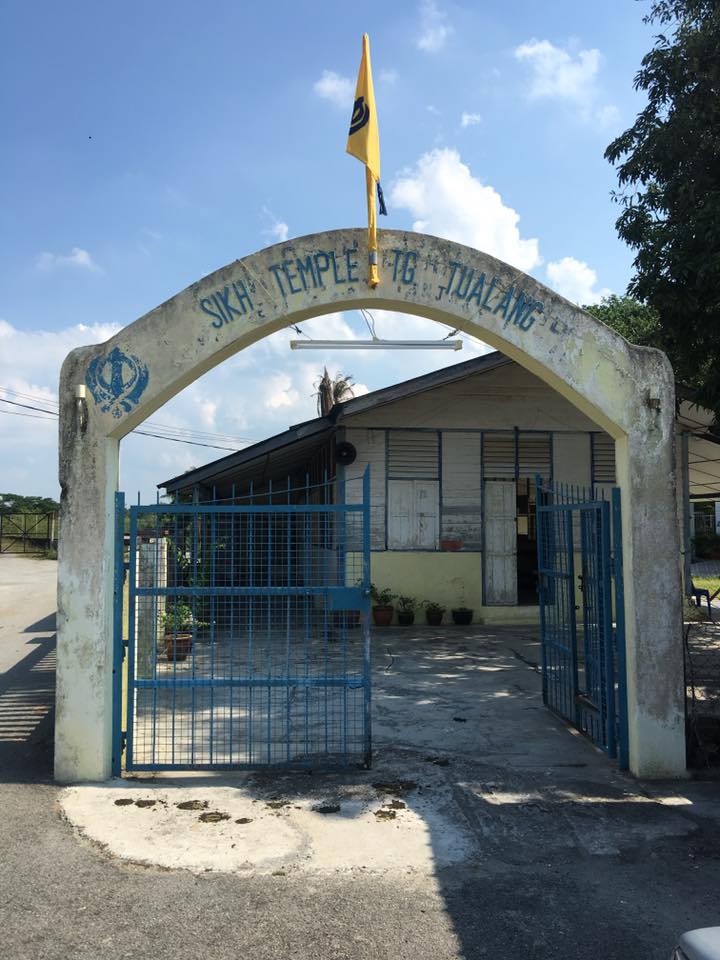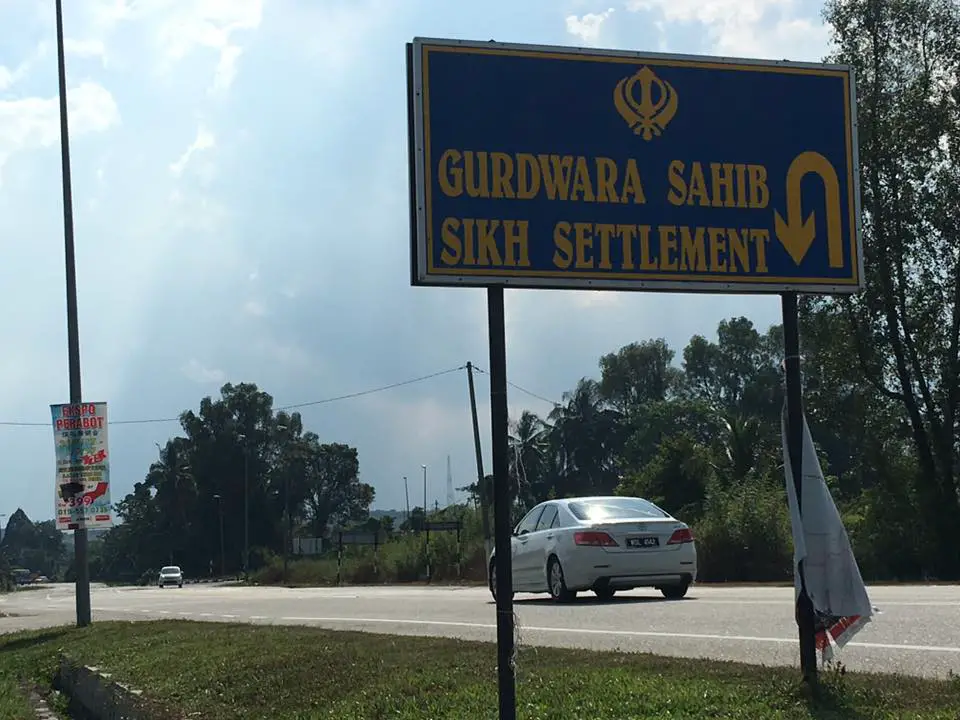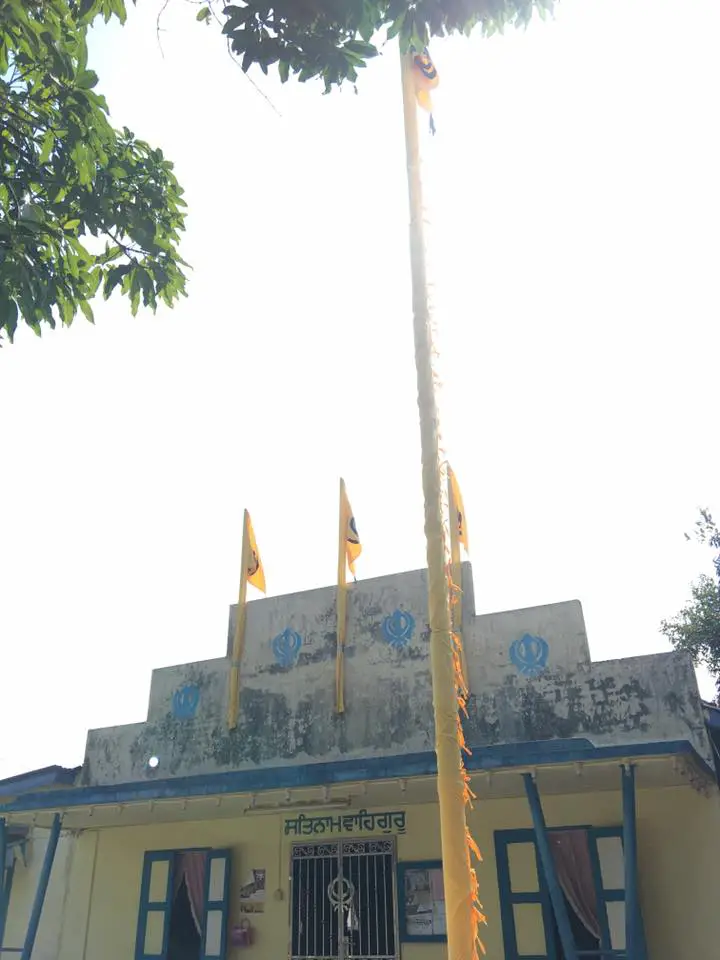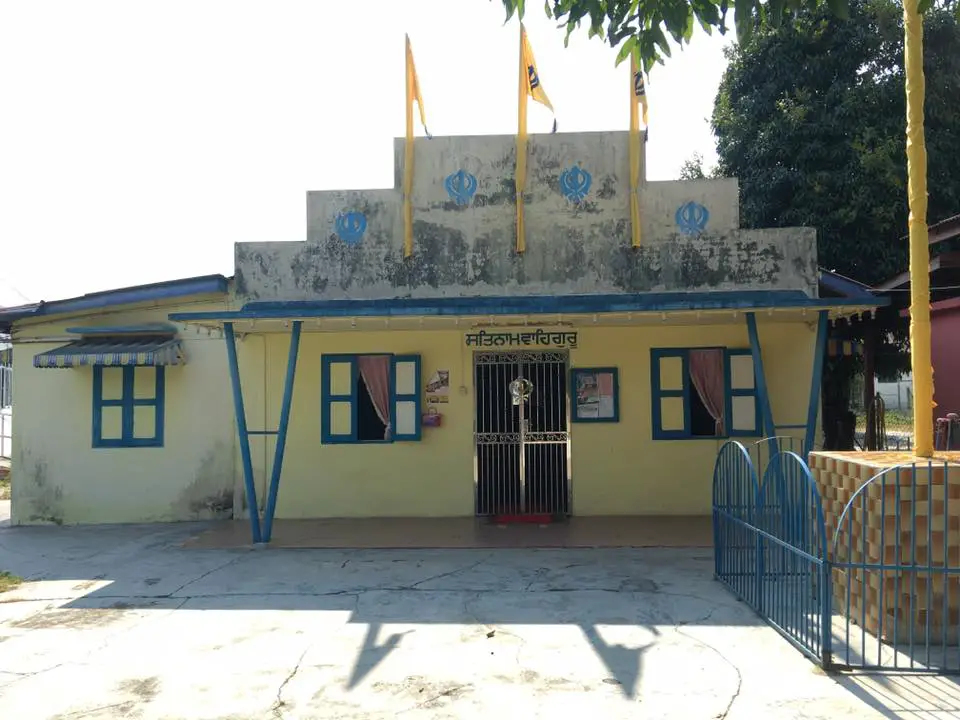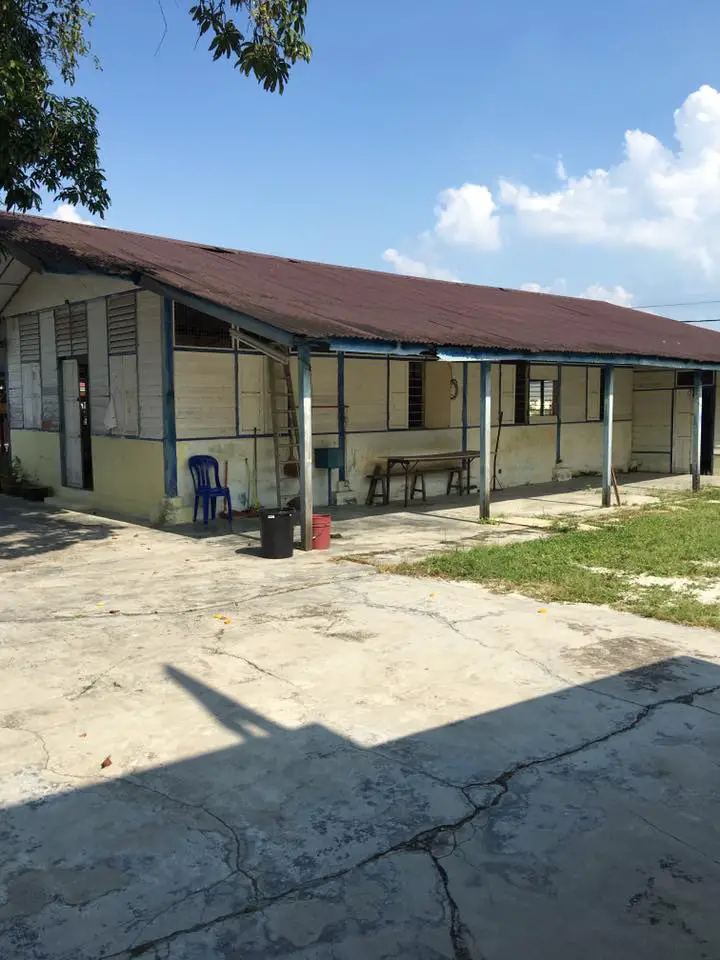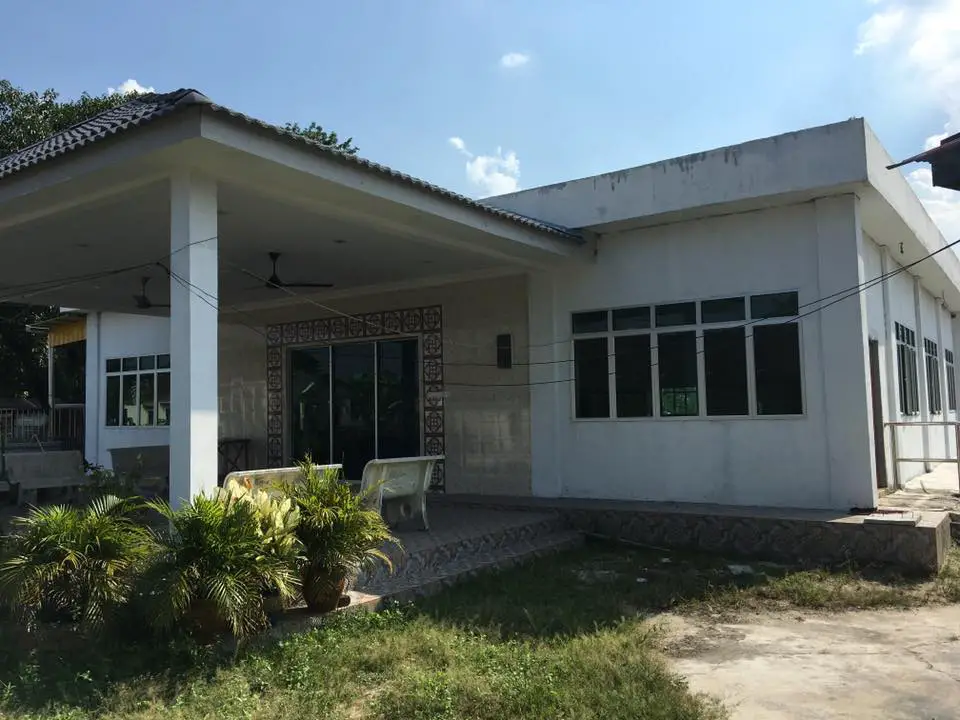Gurudwara Sahib Tanjong Tuallang, Perak
This Sikh settlement or Rindh’ was established in the 1930s. Some of the Sikhs, who came from the Villages in the Punjab, settled here and preserved their way of life and culture. Some of the pioneers who established this Pind’ were Sardar Hazara Singh Gendeke, Sardar Inder Singh Dekoha, Sardar Sohan Singh Dekoha, Sardar Teja Singh Pendori, Sardar Najar Singh Chone, Sardar Banta Singh Saidpur, Sardar Amar Singh Kaleke, Sardar Ganga Singh Sidhu, Sardar Tara Singh Khanowaal, Sardar Banta Singh Tersika, Sardar Sadhu Singh Pendher and Sardar Chanan Singh Pendher. These early Sikh settlers spoke, wrote and read Punjabi in the traditional Rindh’ style. The head of this Village, known as a Serpanch, was elected to oversee the day-to-day affairs. The committee of elderly respected Sikh members of the community, known as a panchayat% was also elected to settle all disputes within the Sikh community in this Village. This system of local administration is still in practice today in this Tindh’.
Most of these early Sikhs were cattle owners, tin mine workers, dairy farmers or bullock cart drivers, the main mode of transportation at that time. Some of the larger bullock carts were six-wheelers, and were pulled by four to six oxen, so as to carry a heavier load of goods, especially logs from the forest. The only other mode of transportation was the famous ‘Raleigh’ bicycle.
During the Japanese occupation (1942 to 1945) and the subsequent resettlement of people into new Villages during the Communist insurgency (1948 to 1960), Sikhs from nearby areas moved to this Sikh settlement. By the late 1950s, this Sikh settlement had grown to its present size with a population of about 200 Sikhs.
In the early days, most of these Sikhs used to travel to the Gurdwara Sahib in Air Papan, a distance of about eight kilometres (nearly six miles). As it was not easy to travel such a long distance due to inadequate transport, the Sikhs in the settlement in Tanjong Tuallang decided to build a Gurdwara Sahib near their homes in the Village.
In 1955, the Village Serpanch, Sardar Banta Singh Randhawa and Sardar Teja Singh Pendori together with the sangat built a small Gurdwara Sahib within the confines of the Sikh settlement. The Gurdwara Sahib building was a single storey wooden structure measuring 30 feet by 20 feet.
Every night shabad kirtan hymns were sung by the kirtan jathas accompanied by the Sikh sangat. Traditional musical instruments like dholki, chimta, bajha, khadtala, shainey etc. were used during the kirtan. On occasions, the kirtan sessions went on till late into the night. Other religious functions like marriages etc. were usually held at the respective homes, as the Gurdwara Sahib premises were too small. The traditional kirtan singers, now known as “Gadgaj Jetha”, are a reminder of yesteryear. One of these jethas led by Sardar Sadhu Singh Pendher is well known and is usually invited by the Sikh Sangat to perform in the traditional style. This jetha has also won numerous prizes at kirtan competitions. The Jethedar, Sardar Sadhu Singh Pendher, is now 85 years old. He has been singing hymns from the Gurbani since the 1940s and still has a melodious voice.
In 1970, Sardar Santokh Singh s/o Banta Singh, Sardar Mokhtar Singh, Sardar Bawa Singh, Sardar Hari Singh and Sardar Naranjan Singh collected donations from the Sikh sangat to build a new, larger Gurdwara Sahib. The foundation stone of this new Gurdwara Sahib was laid by the Panj Piyarae on 3’March 1970. The completed Gurdwara Sahib building was declared open by the Sikh Sangat on 1st August 1970. The present Gurdwara Sahib building is 35 feet by 60 feet and situated on a piece of land which is 1/2 an acre in size. The cost of this Gurdwara Sahib building was RM8,000.00. At the same time, a school was also built where Gurmukhi classes are thought to the Sikh students, who presently number about 40 children.
Important jormelas and religious celebrations were usually followed by wrestling and Kabadi matches. Two of the well-known wrestlers from these Sikh settlements were Sardar Mukhtar Singh and Sardar Terlok Singh. The Kabadi team from this Sikh settlement led by Sardar Santokh Singh. represented the State of Perak from 1965 to 1980 and during that period they never lost a match.
Sardar Banta Singh `Saidpue was a well-known weightlifter in this Sikh settlement of Tanjong Tuallang. In the 1930’s and 1940’s, he used to travel all over Malaya with his stone, which weighed 300 katis (180 kilos). No one ever succeeded in lifting this stone except for him. Banta Singh was aptly called `watean wala’ (weight lifter). When the need arose, he used to add extra weight to his stone.
Some of the Sikhs born in this Pindh’ (Sikh settlement) are prominent community leaders today. Sub-Inspector (Rtd) Gormok Singh, a well-known shot-putter of national fame, was the first Sikh from this Rindh’ to join the Police Force. He has retired and is very active in the Kuala Krai and Tumpat Gurdwara Sahibs in the State of Kelantan. Sardar Santokh Singh is presently the chairman of the Punjabi Education Trust Malaysia. He is responsible for the current wave of revival of the Punjabi language in this country. Sardar Dr.Enjer Singh, who is an orthopaedic surgeon, is involved in a host of welfare organisations.
The younger generation has mostly left for greener pastures elsewhere in the country. Usually, some of them return during the Vesakhi festival in April to celebrate the occasion at this Gurdwara Sahib with their families. The present residents are mainly Village elders and retired pensioners who consist of about 35 families. Now, this unique Sikh settlement with its Gurdwara Sahib in the middle stands out as the only existing Sikh settlement in Malaysia. When the author visited this Sikh settlement, he had the feeling of going back in time. Such is the mystique and charm that still remains in this peaceful place. This Pindh is slowly being absorbed into the modern era but an aura of its nostalgic past still remains.
In the early days, Bhai Pritam Singh and later his son, Bhai Karram Singh used to perform the duties of a Granthi. Bhai Diwan Singh served as a Granthi here from 1955 to 1975. He was followed by Bhai Nidhan Singh who served as a Granthi from 1975 to 1980. Since then, the Sikh sangat of this Sikh settlement have been taking care of the Gurdwara Sahib and performing the daily Prakash and Semapti sewa of the Holy Book, Sri Guru Granth Sahib Ji. On important religious occasions like marriages etc. a Granthi is usually brought here from one of the neighbouring Gurdwaras.
The present Management Committee comprises of the President, Vice President, Secretary, Treasurer and seven committee members. The present Serpanch is Sardar Sarjit Singh and the Advisor is Sardar Santokh Singh.
The weekly prayers are held on Wednesdays from 3.00p.m. to 5.00p.m. Other religious programmes are held as and when required at the request of the Sangat.
Courtesy:
Sikh Gurudwaras in Malaysia&Singapore
Saran Singh Sidhu AMN,PNM,FRNS
